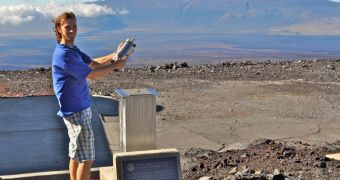According to the results of a new scientific study, it would appear that the atmosphere's ability to clean itself from pollutants – except carbon dioxide – is being maintained at a steady level, and not dropping, as some studies seemed to suggest.
The conclusion was derived from a research that was led by experts at the US National Oceanic and Atmospheric Administration (NOAA), who wanted to determine if levels of hydroxyl radical remain steady in Earth's air.
This chemical is one of the most important players in our planet's atmospheric self-cleaning process, investigators say, and measurements show that HR levels are holding steady.
Investigations conducted over the past few years had indicated that concentrations of this particular compound in the air had dropped by as much as 25 percent, which would have implied a disastrous outcome for the atmosphere, and everything living within.
The new research might finally put an end to the debate raging on in the scientific community about whether the atmosphere's ability to self-clean is fragile and threatened by slight changes in climate or if it boasts a higher degree of stability.
Fortunately, the data seem to favor those arguing for greater stability. Details of the work and exact numbers related to HR levels were published in the January 5 issue of the top journal Science.
It would appear that hydroxyl radical concentrations vary by only a few percents every year, not by as much as 25 percent, as previously estimated. This means that a natural variation exists in its level, but that the overall concentrations are rather stable.
“The new hydroxyl measurements give researchers a broad view of the ‘oxidizing’ or self-cleaning capacity of the atmosphere,” explains scientist Stephen Montzka.
“Now we know that the atmosphere’s ability to rid itself of many pollutants is generally well buffered or stable. This fundamental property of the atmosphere was one we hadn’t been able to confirm before,” the expert adds.
Montzka holds an appointment as a research chemist at the NOAA Global Monitoring Division, in Boulder, Colorado, and he was also the lead author of the new research paper.
The expert says that one of the reasons why analyzing global HR levels has been so difficult is because the compound – made up of one hydrogen atom bound to a single oxygen atom – reacts with other chemicals very fast.
“In the daytime, hydroxyl’s lifetime is about one second and is present at exceedingly low concentrations. Once created, it doesn’t take long to find something to react with,” Montzka concludes.

 14 DAY TRIAL //
14 DAY TRIAL //